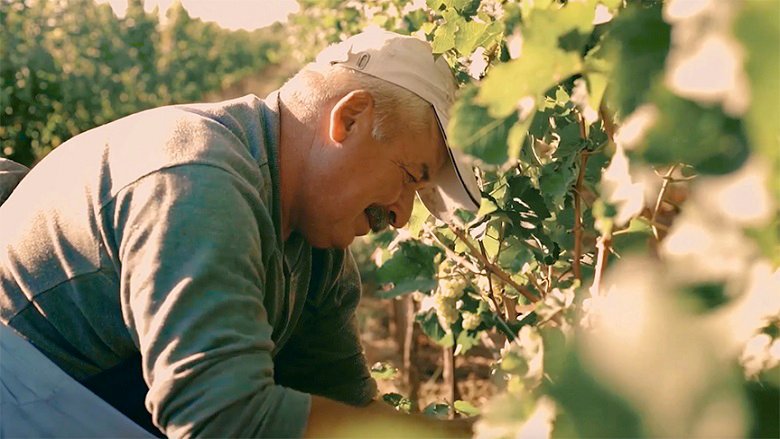On the steep hillsides of Karongi, Rwanda, farmers remember when crops failed and people went hungry. Today, fruits and vegetables grow on the terraced and irrigated hills in Karongi and elsewhere in the country. In the decades following the Rwandan genocide, efforts to revive agriculture have paid off in Rwanda. Controlling erosion, restoring degraded landscapes, diversifying crops, irrigating hilly terrain, and training farmers in new techniques have boosted high value horticulture and trade, improved incomes and diets, and helped make Rwanda one of the fastest growing countries in the world prior to the COVID-19 pandemic.
But like the rest of the world, Rwanda faces the growing impacts of climate change: landslides and droughts caused by heavy and erratic rainfall have taken a toll.
Climate change is increasingly visible on every continent. In the future, declining agricultural productivity will be a key factor in people’s decisions to migrate within their own countries, according to the World Bank’s new Groundswell report, which estimates that 216 million people in six regions of the world could become internal climate migrants by 2050.
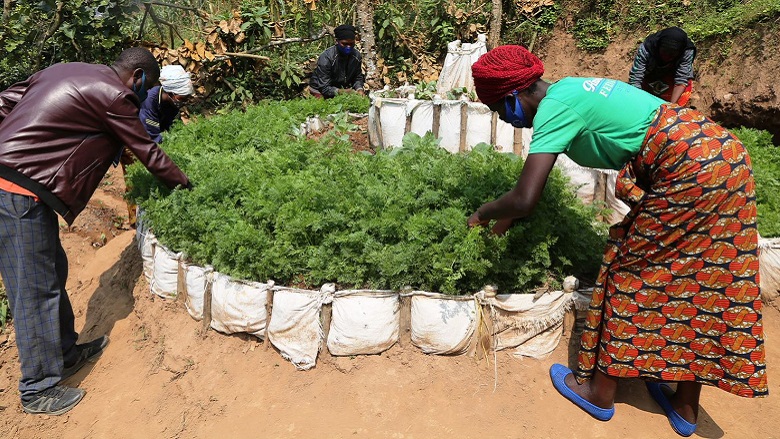
Agriculture’s Impact on GHG Emissions
Agriculture, forestry and land use account for about a quarter of the greenhouse gas emissions driving climate change. The largest agricultural emissions come from land conversion, such as clearing forests for farms; methane from livestock and rice production; and nitrous oxide from the use of synthetic fertilizers.
Agriculture is also the largest consumer of land and water, with impacts on forests, grasslands, wetlands, and biodiversity. Food and land use systems generate environmental, health, and poverty costs estimated at almost $12 trillion per year.
Agriculture and food production are key sources of employment and livelihoods for large numbers of people around the world, yet 3 billion people are unable to afford healthy diets, according to recent estimates. Low incomes, high prices and a system that favors staples like wheat, rice, and maize over fruits and vegetables conspire to keep fresh and nutrient-rich food out of reach of many.
Current agricultural policies and public support often exacerbate the problem. When governments favor input subsidies or price supports over investment in agricultural research or environmental services, the results can be negative: excessive use of fertilizers, over-pumping groundwater with cheap or free electricity, inefficient use of underpriced water, or agricultural systems that focus on a single crop.
"Agriculture, forestry and land use account for about a quarter of the greenhouse gas emissions driving climate change."
Food Systems: the Scale of the Challenge
The world’s food systems will have to become much more productive to feed a projected global population of nearly 10 billion by 2050 while also reducing emissions and protecting the environment. Studies estimate the cost of food systems transformation would be about $300-350 billion per year over the next 10 years.
“The scale of this challenge exceeds the capability of any single institution,” said Martien van Nieuwkoop, Global Director for the Agriculture and Food Global Practice at the World Bank. “For that reason, collaboration is needed to make sure the right incentives are in place and the financing is mobilized to make that happen.”
Through the World Bank Group’s Climate Change Action Plan (2021-2025), the Bank will step up support for policies and technological innovations that promote climate-smart agriculture – an approach to managing landscapes that increases productivity, builds resilience, and reduces emissions by avoiding deforestation and identifying ways to absorb carbon from the atmosphere.
"The world’s food systems will have to become much more productive to feed a projected global population of nearly 10 billion by 2050 while also reducing emissions and protecting the environment."
Crop Diversification Approaches
In Uzbekistan, for example, the Bank is working with the government to help shift from cotton and wheat toward a farming system that is more diversified and resilient to climate shocks. Cotton and wheat consumed 72% of arable land and 90% of irrigation water and agricultural public expenditures but generated only 23% of total agricultural output. A new strategy aims to make more efficient use of land and water – and create jobs -- by developing the horticulture sector while reducing State involvement in wheat and cotton. The effort removed production subsidies for low-yield soils which have suffered the most environmental damage and ended child and forced labor to harvest cotton. Cotton growing declined from 1.3 million hectares in 2016 to 0.9 million hectares in 2020. High-value horticulture exports increased from $570 million in 2017 to $1.2 billion in 2019. “Better incentives for producing horticulture products generate multiple climate co-benefits, both for mitigation and adaptation,” said Sergiy Zorya, Lead Agricultural Economist for the World Bank’s Europe and Central Asia region.
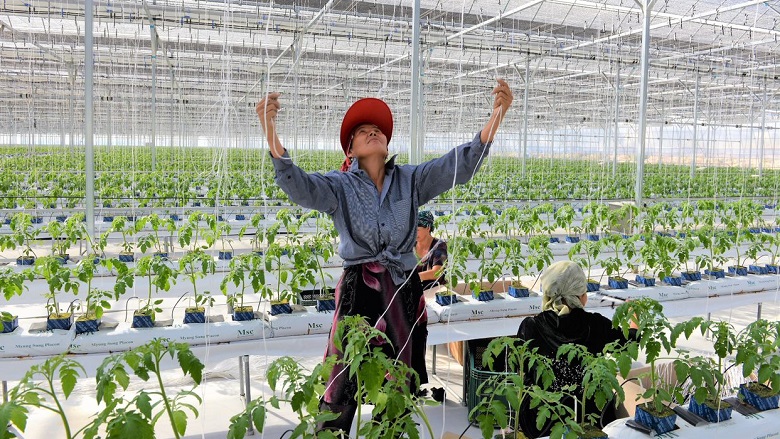
GHG Emissons: Addressing Fertilizer Imbalance
In Pakistan, the SMART Punjab Program aims to empower small scale farmers to grow more climate-resilient, profitable and nutritious crops than wheat. The program enabled farmers to buy improved seeds (oilseed, cotton, rice) and fertilizers (phosphatic and potash) at reduced cost through e-vouchers they could redeem through branchless banking operators. In doing so, the program addressed an imbalance in the use of fertilizers. About 77% of fertilizer sold in Punjab is urea, which is produced through energy intensive methods and has much higher GHG emissions per unit than the other fertilizers available. The SMART program subsidizes other fertilizers like phosphates and potash with the aim to increase their current market share of 22% and 1% currently. “Improving fertilizer management can reduce GHG emissions. It is also likely to have significant sustainable development benefits, including increased crop yields and profitability,” said Asad Rehman Gilani, Secretary, Agriculture Department, Government of the Punjab, Pakistan.
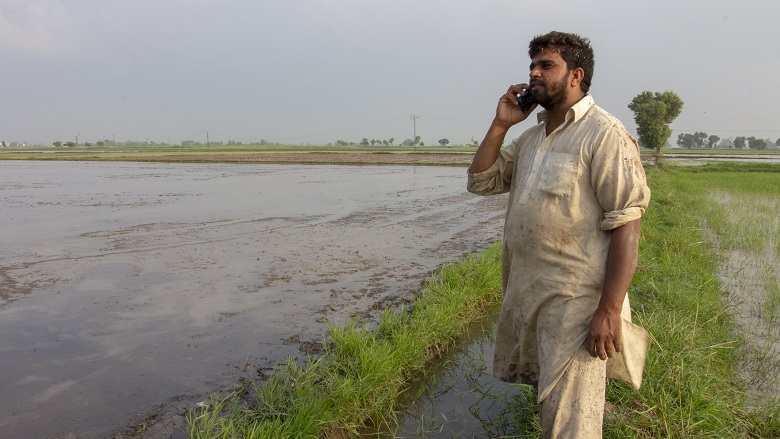
Reducing Food Loss and Waste
Between 30%-40% of all food produced each year is lost or wasted. In developing countries, food is typically lost during the harvest or in storage – a problem that could be addressed in developing countries by investing in infrastructure, transportation, and technology for storage and sustainable cooling.
In the Philippines, where destructive weather events disproportionally affect the poor, the Philippines Rural Development Project constructed over 1,200 km of farm-to-market roads, with more underway, as well as other crucial rural infrastructure, such as bridges and communal irrigation systems, and investments along the value chains, including storage and processing facilities.
During the COVID-19 pandemic, the Kenyan government collaborated with IFC client Twiga Foods and other companies using mobile-based digital commerce platforms to match farmers with transport and storage facilities. The Bank is addressing policy options and trade-offs involved in tackling food loss and waste and will implement farm-to-fork food system diagnostics to identify cost-effective climate mitigation and adaptation priorities across the value chain.
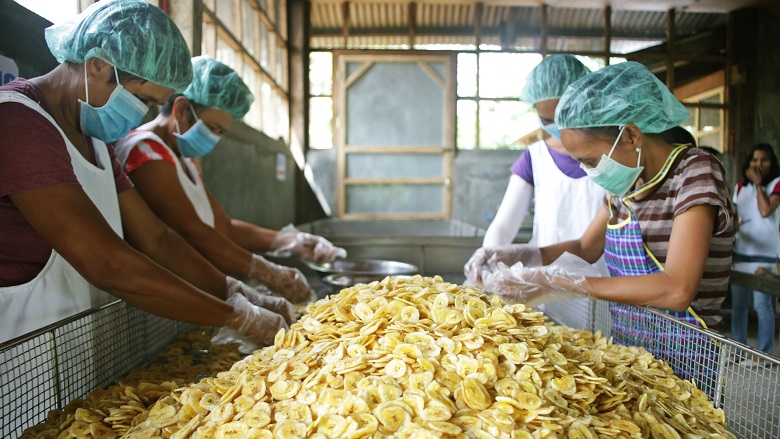
Nature Based Solutions and Carbon Sinks
Nature-based solutions to environmental challenges could deliver 37% of climate change mitigation necessary to meet the goals of the Paris Agreement. Conserving the large volumes of carbon stored in natural forests, grasslands, and wetlands is important for climate change adaptation and mitigation and is essential to increasing the resilience of ecosystems. Soils, too, are among the planet’s largest reservoirs of carbon and soil carbon storage. Nature-based solutions can also be applied in coastal areas to stabilize shorelines and reduce flooding and erosion, which helps to maintain fisheries -- a key source of food security and nutrition for about 3.2 billion people.
"Nature-based solutions to environmental challenges could deliver 37% of climate change mitigation necessary to meet the goals of the Paris Agreement."
Nature-based solutions can enhance ecosystem functions in landscapes affected by agricultural practices and land degradation, improving water availability and quality, productivity of crop systems, and livestock health. In Colombia, farmers planted 3.1 million trees and adopted silvopastoral techniques combining trees/shrubs with pasture: these techniques increased carbon sequestration and improved the availability and diversity of food sources, resulting in improved productivity and higher resilience.
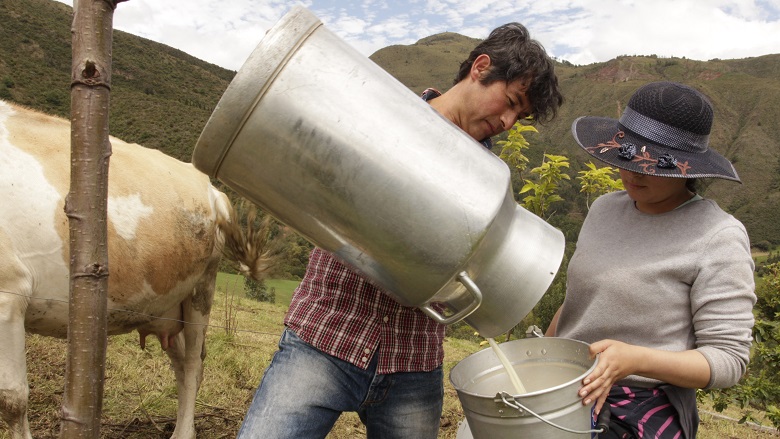
The Turkey Resilient Landscape Integration Project will combine nature-based solutions with resilient infrastructure to address seasonal flooding, droughts, soil erosion and landslides in the Bolaman and Cekerek river basins -- two areas marked by high poverty rates and vulnerability to climate change impacts. The project will restore forest landscapes, train farmers in sustainable agriculture, build infrastructure for irrigation and water supply, and increase livelihood opportunities for poor rural households. The project also aims to help lay the foundation for a national strategy to build resilience in vulnerable rural regions in support of Turkey’s sustainable recovery from COVID-19 and green transition.
Delaying Action ‘No Longer an Option’
Delaying action on food systems is “no longer an option,” said Geeta Sethi, Advisor and Global Lead for Food Systems at the World Bank. “It is an imperative to transform our food systems to improve the health of people, the health of the planet, and the health of our economies.”

